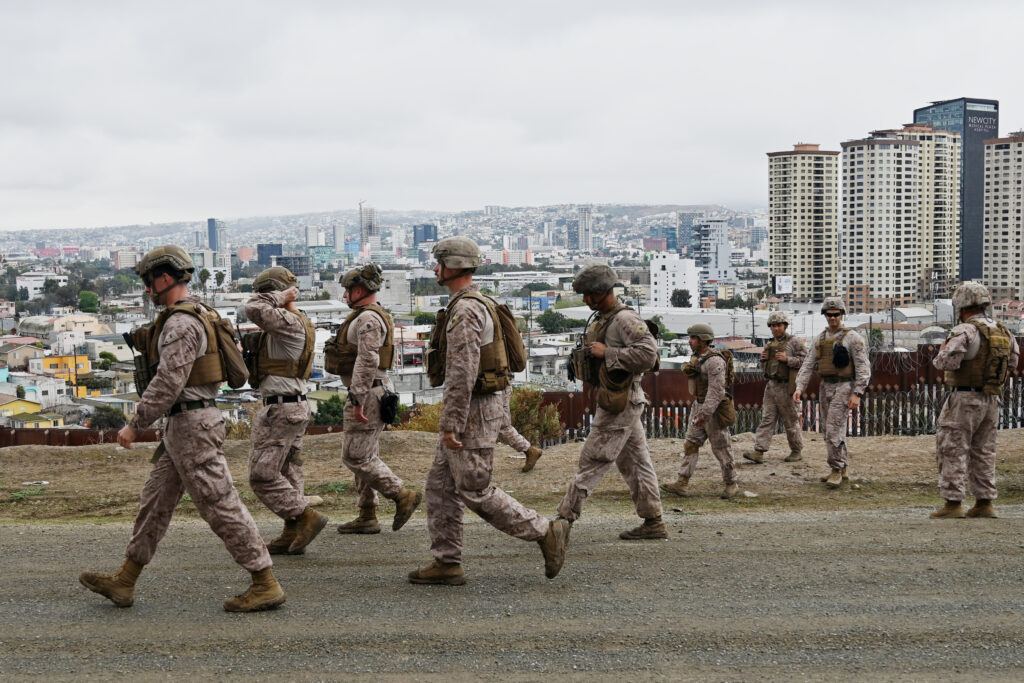In an early move echoing post-9/11 counterterrorism strategies, the Trump administration has designated eight major drug cartels, including Tren de Aragua and La Mara Salvatrucha, also known as MS-13, as foreign terrorist organizations. This sets the administration up to potentially seek wide-ranging congressional authorization for military force against these criminal organizations, similar to that which was introduced in the House in 2023 by then Congressman Mike Waltz, before he became US President Donald Trump’s national security advisor. Passing legislation to authorize the use of military force against these drug cartels would be an appropriate and wise response to the threat they pose to Americans. In 2019, the United States experienced more opioid deaths than the rest of the world combined, and these cartels are funneling many of these drugs into the country.
Congressional approval should resemble the Authorization for Use of Military Force (AUMF) enacted after the September 11 attacks, enabling the deployment of military assets against cartel infrastructure both within and beyond US borders. Congressman Dan Crenshaw, who co-sponsored the previous AUMF legislation targeting the cartels, has called for the formation of a “Select Committee to Defeat the Mexican Drug Cartels” that could eventually recommend such an AUMF. An AUMF against the Mexican drug cartels would unite various government agencies in a coordinated effort to combat what administration officials correctly regard as an existential threat to US security. An AUMF would also ensure that the United States could continue combating these terrorist groups when they inevitably fracture, change their names, or otherwise morph into groups that are different from those eight cartels originally designated.
These cartels have extended their networks into the United States, infiltrating major US cities and establishing themselves in furtherance of their criminal empires. The time has come for a whole-of-government response.
Mexican cooperation and challenges
Mexican President Claudia Sheinbaum’s administration has demonstrated unprecedented willingness to collaborate with US counternarcotics efforts. In the past month, he Mexican government has taken significant steps, including announcing that it would deploy ten thousand troops to the US-Mexico border specifically tasked with combating fentanyl trafficking. The Mexican Senate has also approved measures allowing US Special Forces to resume training with Mexican Marines, while enhanced bilateral cooperation on counternarcotics operations continues to develop. However, the path forward is complicated by years of cartel influence through their “plata o plomo” (silver or lead) intimidation tactics, which have entrenched corruption within Mexican institutions. This presents significant challenges for intelligence sharing and operational coordination between Mexico City and Washington, requiring careful consideration on how sensitive information and joint operations are managed.
The China connection
Perhaps most alarming is the emerging evidence of Chinese involvement in the narcotics trade. Intelligence reports indicate that Chinese companies, often operating with apparent impunity, supply Mexican cartels with fentanyl and precursor chemicals, while providing critical financial infrastructure for money laundering operations.
The Chinese doctrinal concept of “unrestricted warfare” proposes multiple indirect approaches for undermining strategic competitors, particularly the United States. Within this broader construct, the US House Oversight Committee identified “drug warfare” as one means by which China deviously attacks the very fabric of US society. This strategic dimension transforms what might otherwise be viewed as a law enforcement issue into a matter of national security. According to a September 2024 report by the Heritage Foundation, China’s facilitation of the fentanyl trade into the United States causes approximately two hundred deaths per day and cost the US economy upward of $1.5 trillion in 2020 alone.
A new strategic approach
Drawing lessons from successful counterterrorism campaigns, the administration should pursue a multi-faceted strategy that would fundamentally reshape the approach to combating cartels. As with the first Trump administration’s successful campaign to dismantle the caliphate of the Islamic State of Iraq and al-Sham (ISIS), the strategy should include both taking military action against criminal organizations’ infrastructure and strengthening diplomatic partnerships with regional allies. Equal emphasis must also be applied to targeting the financial networks that facilitate drug trafficking, as well as addressing the corruption and institutional weaknesses that enable cartel operations to flourish.
This threat must be understood within the broader context of strategic competition with China, as these cartels are effectively serving as proxy forces in a nefarious indirect attack on the United States.
Looking forward
Success will require sustained commitment from both the Mexican and US governments, along with unprecedented levels of international cooperation. Any proposed AUMF would provide a legal framework for military operations, but that force must be combined with other elements of national power to achieve lasting success.
Such an initiative is ultimately about creating alternatives for the Mexican people while eliminating the cartels’ ability to serve as proxies in China’s unrestricted warfare against the United States. This approach addresses both the United States’ and Mexico’s shared security interests and creates opportunities for mutual economic benefit.
As the administration moves forward with these proposals, influential members of Congress are already signaling support for expanded authorities to combat cartel influence. With bipartisan concern over fentanyl deaths and growing awareness of Chinese strategic involvement, the stage appears set for a significant shift in how the United States confronts this evolving threat to national security.
Doug Livermore is a member of the Atlantic Council’s Counterterrorism Program, the director of engagements for the Irregular Warfare Initiative, the national vice president for the Special Operations Association of America, national director for external communications at the Special Forces Association, and the deputy commander for Special Operations Detachment–Joint Special Operations Command in the North Carolina Army National Guard. He also previously served in the Department of Defense as a senior government civilian, intelligence officer, and contractor.
The views expressed are the author’s and do not represent official US government, US Department of Defense, or US Department of the Army positions.
Further reading
Thu, Jan 16, 2025
How Sheinbaum can strengthen US-Mexico ties in Trump’s first 100 days
New Atlanticist By
Decisions taken in the next few months about the US-Mexico relationship could shape the two nations’ bilateral ties for years to come.
Tue, Jan 14, 2025
US intervention against Mexican cartels carries major risks. Here’s how to mitigate them.
New Atlanticist By
Cartels have a significant capability to retaliate, but there are ways that the United States can prepare for such risks.
Sat, Feb 1, 2025
Experts react: Trump just slapped tariffs on Mexico, Canada, and China. What’s next?
New Atlanticist By
Our experts explain the economic and geopolitical implications of the US tariffs on Mexico, Canada, and China.
Image: United States Marine Corps troops patrol the US-Mexico border area as seen from San Diego, California, as the Defense Department deployed 1,600 active-duty troops to the border during US President Donald Trump's second week in office. US Marine Corps Lt. Gen. Michael Cederholm, commander of the I Marine Expeditionary Force, talks US Marines deployed near the San Ysidro Port of Entry with Tijuana, Baja California, Mexico in the back, on Friday, February 07, 2025. (Photo by Carlos Moreno/Sipa USA.



